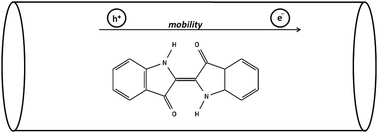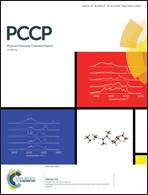Structural, optoelectronic and charge transport properties of the complexes of indigo encapsulated in carbon nanotubes†
Abstract
Using the dispersion-corrected density functional B97D and 6-31g(d,p) basis set, the structural, stability, electronic, optical and charge transport properties of the complexes formed by encapsulating indigo inside carbon nanotubes (CNTs) of varying diameters are investigated. Based on the stabilization energy of the complexes indigo@(n,n)CNT (where n = 6, 7 and 8), indigo@(7,7)CNT is shown to be the most stable owing to the ideal diameter of (7,7)CNT for encapsulating indigo. The nature of the interaction between the guest and the host is investigated by means of energy decomposition analysis employing the symmetry adapted perturbation theory. Electronic properties such as the ionization energy, the electron affinity and the energy gap between the highest occupied and lowest unoccupied molecular orbitals (ΔEH–L) of the complexes are determined. The low values of ΔEH–L (<1 eV) for the complexes suggest that they can act as narrow energy gap semiconductors. All the complexes exhibit high hole and electron mobilities which vary inversely with respect to the diameter of the CNT. Using the time-dependent density functional theoretical method, the absorption properties are predicted for the most stable complex indigo@(7,7)CNT. The presence of charge transfer peaks in the visible and near-infrared regions of the electromagnetic spectrum suggests that the complexes are suitable for optoelectronic devices such as solar cells.



 Please wait while we load your content...
Please wait while we load your content...